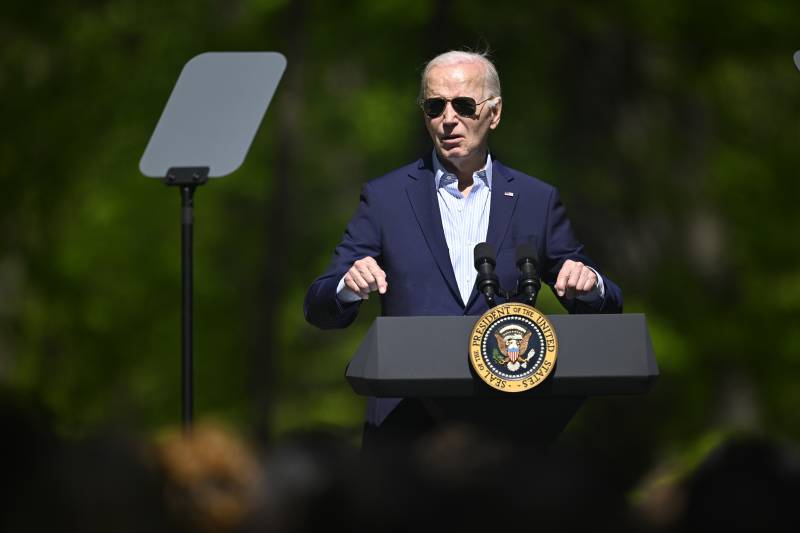To be fair, this really is just the beginning. Throughout the first year, there will be 20,000 total American Climate Corps positions, ranging from summer jobs to one-year slots, Shaheen-McConnell said; 200,000 are planned within five years. Some of these will be created through three newly announced “corps” partnerships with AmeriCorps and other federal agencies and nonprofits: one for forests, one for climate-smart agriculture, and one for communities transitioning away from coal and other fossil fuel-based economies. In addition, Shaheen-McConnell said, 13 states thus far have launched their own climate corps, most of which rely on some AmeriCorps funding.
Sally Slovenski, the program director for Campus Climate Action Corps, told me a national call to action is “really critical.” She said it would “definitely help raise awareness and recruit.” Her group is the first nationwide AmeriCorps program focused only on campus-based and community-led climate action initiatives, and the source of many listings on the current American Climate Corps site.
Carla Walker-Miller, CEO of Walker-Miller Energy Services, a Michigan-based energy efficiency company, is one business leader who’s excited about the recruitment potential of a national climate service program. “The new workforce demands training and innovation to support the new economy,” she said. “I really appreciate the fact that the Climate Corps exists. There has to be an easily accessible online clearing house – a one-stop shop.”
There’s some fuzziness, though, about what, exactly, makes something a climate job. Does wildfire fighting count? What about trail maintenance? Or educating park visitors on “stewardship”? Shaheen-McConnell said her agency intentionally took a “broad lens” because “every community is facing different climate challenges.”
That wide focus may be confusing to potential applicants. “Young people don’t understand how climate-related service work falls into what I call ‘the 4 Rs’ – reduction, response, recovery and resilience/preparedness work,” said Dana Fisher, a sociologist at American University who studies climate and social movements. AmeriCorps and other federal agencies have given her research funding to evaluate their climate-related service work and help them build it out in an effective way. For example, she’s developing a curriculum to help participants better understand how their service work relates to climate change.
Rebecca Tarczy is a current AmeriCorps member with the Campus Climate Action Corps, Slovenski’s organization. Tarczy loves animals; she graduated with an environmental studies degree in fisheries and wildlife and pictured herself working outside. Instead, her position at College of the Atlantic in Maine entails doing community education on energy efficiency.
So far, she’s installed insulation in campus buildings, and held three public information sessions on and off campus, each of which had fewer than 10 attendees. She said it’s been a bit of a letdown for herself and peers in similar positions. “I think we were all a little disappointed that it was home-energy based.” For what it’s worth, by Fisher’s definition, this is very much a climate-action job; buildings account for around 29% of U.S. carbon emissions.
Tarczy, 30, is also pretty strapped for cash. AmeriCorps pays her an $18,000 salary, plus some student loan forgiveness benefits. She gets subsidized housing, too: $640 a month, including utilities and Wi-Fi. “Recently my car died and I kind of had to sell my soul to get a new one,” she said, adding that when she applied for an auto loan, “They were like, ‘Is that your correct salary?’”
The stinginess of AmeriCorps stipends has been a long-time issue that critics say prevents the program from being as equitable as it could be. “We can do so much better,” said Walker-Miller, who notes that her own employees start at $19 an hour. “I think that all jobs should compensate people at a reasonable minimum wage.”
Shaheen-McConnell said the president is calling on Congress to raise the minimum living allowance for AmeriCorps members to at least $15 an hour (which would be approximately $30,000 as an annual salary, although AmeriCorps positions vary in duration and hours). The American Climate Corps is also seeking partnerships with philanthropies to provide support like childcare for those who need it.
The American Climate Corps is a clear historical callback to the Civilian Conservation Corps, created by Franklin Delano Roosevelt during the Great Depression to put people back to work. But it’s a lot smaller. For nine years, CCC employed around 300,000 people per year, at a time when the U.S. population was about 40% of its current size. Those young people, all men, planted 2 billion trees, built over 125,000 miles of roads and trails and fought forest fires (some say they went overboard in fire suppression).
Standing up a big new public jobs program from scratch hasn’t been done in a long time. Fisher, of American University, said that growing the corps through a “distributed, federated” approach instead of one big, new program poses difficulties that could get in the way of the program’s effectiveness. Seven different federal agencies, with vastly different goals and mandates, signed the American Climate Corps Memorandum of Understanding: the departments of Commerce, Interior, Agriculture, Labor and Energy, the Environmental Protection Agency and AmeriCorps.
States, especially those with Republicans in charge, may have their own, very different view of what a climate job is.
But hopefully, Fisher said, these differences can be overcome by careful evaluation and coordination. “I am a huge supporter of the ‘let many flowers bloom’ approach,” she said, “as long as they are all blooming to solve the climate crisis.”


